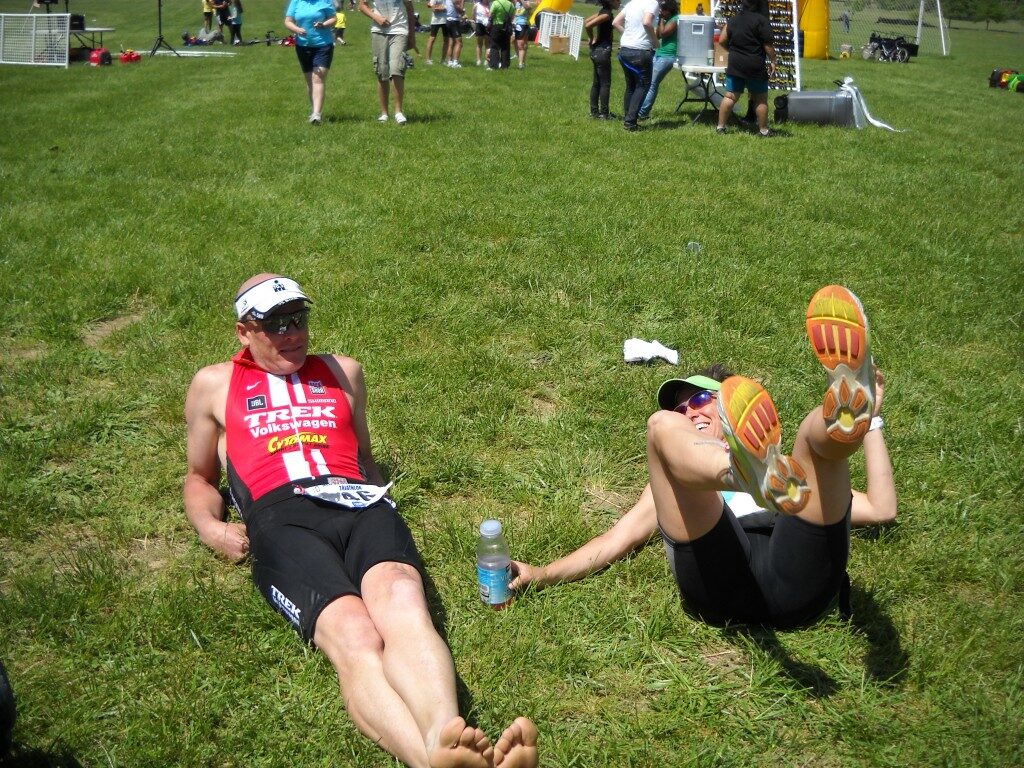
The taper is a period of training that includes a reduction in volume to allow the body to adapt to the previous periods of training stress. Tapers vary based on race distance, weekly training volume and intensity, race goals, and coaching philosophy. So, it is challenging to provide a one-size-fits-all answer to the taper question.
However, there are some general principles to consider.
Fitness & Fatigue
For most people, the body requires 7-10 days to adapt to a training stressor. So, once you get about 10-14 days out from your key race, you need to accept that you are about as fit as you are going to be for race day. The trick is to keep that fitness without introducing too much fatigue. All the fitness in the world isn’t worth much if you are too tired to use it.
As such, loading up your volume in the final days or week before a race will do little to help you on race day–and it may even detract from your performance.
Volume, Duration & Frequency
Taper may include a reduction in training duration (time of training sessions), but not necessarily frequency or intensity. If you have been training 7 days a week, your taper can still include 7 days of training, but each day will likely have slightly less time than previous weeks.
Additionally, we recommend including a moderate amount of intensity during the taper period to prevent your body from becoming too sluggish. “Intensity” does not mean you should run 10x800s at max effort. But, it may mean that you introduce a few higher end efforts that are in line with race-specific pacing. The idea is to keep your muscles fresh and firing – not to fatigue them to the point that they will not recover in time.
Selecting Rest Days Wisely
If you are going to take a rest day or two during race week, we do not recommend complete rest the day before a race as this can tend to make athletes feel sluggish on race day. We like to schedule rest days two days out from the race, and if you want a second rest day, take it earlier in the week. This can be a personal decision, however. So, you may find that you need that rest day before – if so, take it!

Length of taper period
The type and distance of a race plays a role in the design of your taper. Generally speaking, longer races will require longer taper periods. For example, the taper for a full Ironman may be as long as 2-3 weeks, while the taper for a sprint triathlon may be 3-5 days. Likewise, tapering for a marathon requires a longer period than tapering for a 5k.
Additionally, the sport will dictate the length of the taper. Because running introduces significant orthopedic stress on the body, the taper for the run may start earlier than the taper for the bike or swim. Because swimming introduces relatively minimal orthopedic stress, you can keep swim volume relatively high until just a few days before your race. This is a great way to keep your fitness up without fatiguing the body too much.
There is no steadfast rule for how long a taper should be. Three weeks has become the “gold standard” for races like Ironman or marathons. However, for some athletes, this taper may be too long, and a 1 or 2 week taper might work more effectively. In part this is dependent upon the athlete’s experience, and in part it is dependent upon the athlete’s goals.
Goals matter
When you are training for an “A” priority race, such as an Ironman, it is very common (and highly advisable) to have shorter “B” and “C” priority races included as part of your training. There is no better way to introduce race-specific training than to race. But different goals bring with them different tapering strategies.
Let’s use an athlete we’ll call Nicole as an example. She is racing Oceanside 70.3. This is a “C” priority race for her. It is not the main goal of the season, and its primary purpose is as part of training for her “A” race, which is Ironman Coeur d’Alene.
For experienced athletes, we would recommend a minimal taper for a race like this one, perhaps just a touch more than a typical reduced load week. However, Nicole is in the first year of triathlon training. She has done 1 sprint and 1 Olympic. Oceanside will be her first half ironman. Given this limited experienced, we would stay on the side of caution to ensure she is properly rested and prepared for the day. So, we would recommend reducing her volume by as much as 30% going into race day
Nicole has been training an average of 15 hours a week. Her 70.3 race week training might look something like this:
- Monday – 1800 yard swim, including some swim start practice; 30 minute run with 1-2 minute pickups.
- Tuesday – 45 minute bike (some high cadence work), 15 minute run
- Wednesday – 1500 yard swim, 40 minute bike (some pickups)
- Thursday – Rest day (or optional 30 minute walk)
- Friday – 10 minute easy swim (open water with wetsuit if possible), 20 minute bike easy checking brakes, gearing, etc., 10 minute run. (Workout completed continuously.)
- Saturday – Race day
- Sunday – Active recovery – 1200 yard swim, easy.
A taper needs to take into consideration not only the goals for the current race, but the goals for higher priority races that are coming later in the season. In designing a taper for Nicole, we would have to keep in mind her larger season goals: a full Ironman. So, this is not the same type of taper we would prescribe if someone’s “A” race was the half-ironman.
As you can see, the details of tapering will be different from person to person; however, there are several general principles that apply across difference cases. An effective taper strategy is both science and art.
